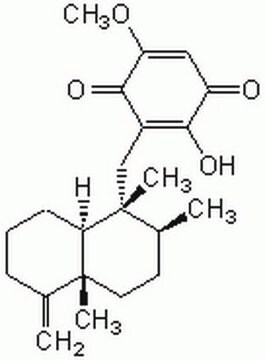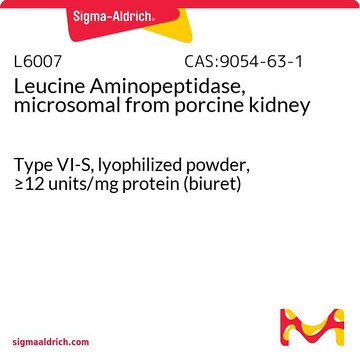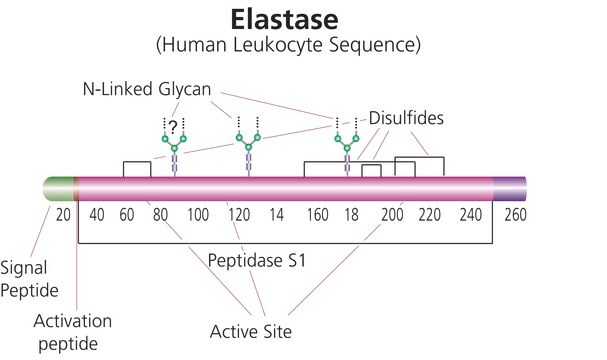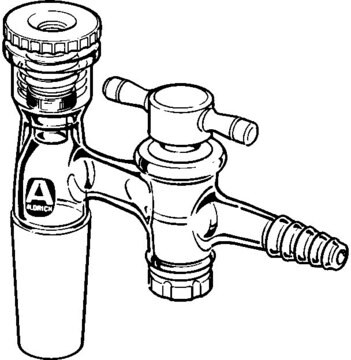17-609
ChIPAb+ Acetyl-Histone H3 (Lys9) Serum - ChIP Validated Antibody and Primer Set
serum, from rabbit
Synonym(s):
H3K9Ac, Histone H3 (acetyl K9)
Sign Into View Organizational & Contract Pricing
All Photos(1)
About This Item
UNSPSC Code:
12352203
eCl@ss:
32160702
NACRES:
NA.52
Recommended Products
biological source
rabbit
antibody form
serum
clone
polyclonal
species reactivity
human, mouse
species reactivity (predicted by homology)
mammals
manufacturer/tradename
ChIPAb+
Upstate®
technique(s)
ChIP: suitable
immunoprecipitation (IP): suitable
western blot: suitable
NCBI accession no.
UniProt accession no.
shipped in
dry ice
Gene Information
human ... H3F3B(3021)
General description
All ChIPAb+ antibodies are individually validated for chromatin precipitation, every lot, every time. Each ChIPAb+ antibody set includes control primers (tested every lot by qPCR) to biologically validate your IP results in a locus-specific context. The qPCR protocol and primer sequences are provided, allowing researchers to validate ChIP protocols when using our antibody in their chromatin context. Each set also includes a negative control antibody to ensure specificity of the ChIP reaction.
The ChIPAb+ Acetyl-Histone H3 (Lys9) set includes the anti-acetyl-histone H3 (Lys9) antibody, a negative control antibody (normal rabbit serum), and qPCR primers which amplify a 166 base pair region within the promoter of the human GAPDH gene. The acetyl-histone H3 (Lys9) and negative control antibodies are supplied in a scalable "per ChIP" reaction size and can be used to functionally validate the precipitation of acetyl-histone H3 (Lys9) associated chromatin.
The ChIPAb+ Acetyl-Histone H3 (Lys9) set includes the anti-acetyl-histone H3 (Lys9) antibody, a negative control antibody (normal rabbit serum), and qPCR primers which amplify a 166 base pair region within the promoter of the human GAPDH gene. The acetyl-histone H3 (Lys9) and negative control antibodies are supplied in a scalable "per ChIP" reaction size and can be used to functionally validate the precipitation of acetyl-histone H3 (Lys9) associated chromatin.
Specificity
Acetyl-Histone H3 (Lys9)
Immunogen
The acetyl-histone H3 (Lys9) antiserum is made against a peptide corresponding to amino acids 4-14 of yeast histone H3 acetylated on lysine 9.
Application
Chromatin Immunoprecipitation:
Sonicated chromatin prepared from untreated HeLa cells (1 X 106 cell equivalents) was subjected to chromatin immunoprecipitation using 1 μL of either a normal rabbit antiserum or Anti-Acetyl-Histone H3 (Lys9) serum and the Magna ChIP A Kit (Cat. #17-610) (Figure 2). Successful immunoprecipitation of acetyl-histone H3 (Lys9) associated DNA fragments was verified by qPCR using control ChIP Primers flanking the human GAPDH promoter or primers amplifying the promoter of human β-globin, which is transcriptionally inactive in HeLa cells. Percent Input relative to standard curves for each qPCR primer set are shown, with immunoprecipitated DNA from control serum shown as (-) and acetylhistone H3 serum as (+).
Please refer to the EZ-Magna A ChIP (Cat. #17-408) or EZ-ChIP (Cat. #17-371) protocol for experimental details.
Western Blot Analysis:
Acid-extracted proteins from normal HeLa cells (Lane 1) and HeLa cells treated with 5mM sodium butyrate for 24 hours (Lane 2) were resolved by electrophoresis, transferred to PVDF membrane and probed with Anti-Acetyl-Histone H3 (Lys9) (1:5000). Proteins were visualized using a goat-anti rabbit secondary antibody conjugated to HRP and chemiluminescent detection system (Please see figures).
Sonicated chromatin prepared from untreated HeLa cells (1 X 106 cell equivalents) was subjected to chromatin immunoprecipitation using 1 μL of either a normal rabbit antiserum or Anti-Acetyl-Histone H3 (Lys9) serum and the Magna ChIP A Kit (Cat. #17-610) (Figure 2). Successful immunoprecipitation of acetyl-histone H3 (Lys9) associated DNA fragments was verified by qPCR using control ChIP Primers flanking the human GAPDH promoter or primers amplifying the promoter of human β-globin, which is transcriptionally inactive in HeLa cells. Percent Input relative to standard curves for each qPCR primer set are shown, with immunoprecipitated DNA from control serum shown as (-) and acetylhistone H3 serum as (+).
Please refer to the EZ-Magna A ChIP (Cat. #17-408) or EZ-ChIP (Cat. #17-371) protocol for experimental details.
Western Blot Analysis:
Acid-extracted proteins from normal HeLa cells (Lane 1) and HeLa cells treated with 5mM sodium butyrate for 24 hours (Lane 2) were resolved by electrophoresis, transferred to PVDF membrane and probed with Anti-Acetyl-Histone H3 (Lys9) (1:5000). Proteins were visualized using a goat-anti rabbit secondary antibody conjugated to HRP and chemiluminescent detection system (Please see figures).
Research Category
Epigenetics & Nuclear Function
Epigenetics & Nuclear Function
Research Sub Category
Chromatin Biology
Chromatin Biology
This ChIPAb+ Acetyl-Histone H3 (Lys9) Serum -ChIP Validated Antibody & Primer Set conveniently includes the antibody & the specific control PCR primers.
Packaging
25 assays per kit, ~1μL per chromatin immunoprecipitation
Quality
Chromatin Immunoprecipitation:
Sonicated chromatin prepared from untreated HeLa cells (1 X 106 cell equivalents) was subjected to chromatin immunoprecipitation using 1 μL of either a normal rabbit antiserum or Anti-Acetyl-Histone H3 (Lys9) serum and the Magna ChIP A (Cat. #17-610) Kit.
Successful immunoprecipitation of acetylhistone H3 (Lys9) associated DNA fragments was verified by qPCR using control ChIP Primers flanking the human GAPDH promoter (Please see figures).
Please refer to the EZ-Magna A ChIP (Cat. #17-408) or EZ-ChIP (Cat. #17-371) protocol for experimental details.
Sonicated chromatin prepared from untreated HeLa cells (1 X 106 cell equivalents) was subjected to chromatin immunoprecipitation using 1 μL of either a normal rabbit antiserum or Anti-Acetyl-Histone H3 (Lys9) serum and the Magna ChIP A (Cat. #17-610) Kit.
Successful immunoprecipitation of acetylhistone H3 (Lys9) associated DNA fragments was verified by qPCR using control ChIP Primers flanking the human GAPDH promoter (Please see figures).
Please refer to the EZ-Magna A ChIP (Cat. #17-408) or EZ-ChIP (Cat. #17-371) protocol for experimental details.
Target description
17 kDa
Physical form
Anti-Acetyl-Histone H3 (Lys9) (rabbit polyclonal serum). One vial containing 25 μL of antiserum containing 0.05% sodium azide before the addition of glycerol to 30%.
Normal Rabbit Serum. One vial containing 25 uL antiserum containing 0.05% sodium azide.
Control Primers. One vial containing 75 μL of 5 μM of each primer specific for for human GAPDH.
FOR: TAC TAG CGG TTT TAC GGG CG
REV: TCG AAC AGG AGG AGC AGA GAG CGA
Normal Rabbit Serum. One vial containing 25 uL antiserum containing 0.05% sodium azide.
Control Primers. One vial containing 75 μL of 5 μM of each primer specific for for human GAPDH.
FOR: TAC TAG CGG TTT TAC GGG CG
REV: TCG AAC AGG AGG AGC AGA GAG CGA
Storage and Stability
Stable for 1 year at -20°C from date of receipt
Analysis Note
Control
Included negative control antibody normal rabbit serum and control primers specific for human GAPDH promoter.
Included negative control antibody normal rabbit serum and control primers specific for human GAPDH promoter.
Legal Information
UPSTATE is a registered trademark of Merck KGaA, Darmstadt, Germany
Disclaimer
Unless otherwise stated in our catalog or other company documentation accompanying the product(s), our products are intended for research use only and are not to be used for any other purpose, which includes but is not limited to, unauthorized commercial uses, in vitro diagnostic uses, ex vivo or in vivo therapeutic uses or any type of consumption or application to humans or animals.
Storage Class Code
10 - Combustible liquids
Certificates of Analysis (COA)
Search for Certificates of Analysis (COA) by entering the products Lot/Batch Number. Lot and Batch Numbers can be found on a product’s label following the words ‘Lot’ or ‘Batch’.
Already Own This Product?
Find documentation for the products that you have recently purchased in the Document Library.
Keisuke Mori et al.
PloS one, 9(1), e87319-e87319 (2014-02-06)
We previously reported that sevoflurane anesthesia reversibly suppresses the expression of the clock gene, Period2 (Per2), in the mouse suprachiasmatic nucleus (SCN). However, the molecular mechanisms underlying this suppression remain unclear. In this study, we examined the possibility that sevoflurane
Raffaella Gatta et al.
Cell cycle (Georgetown, Tex.), 9(11), 2149-2159 (2010-05-28)
Histones are modified by different post-translational modifications which are marks of peculiar chromatin functions. We previously evaluated histone methylations of G1/S and G2/M cell-cycle promoters at the single nucleosome level; here we report an analysis of acetylation marks, including some
Qingsong Zhu et al.
Amino acids, 42(2-3), 887-898 (2011-08-02)
Aberrant epigenetic repression of gene expression has been implicated in most cancers, including breast cancer. The nuclear amine oxidase, lysine-specific demethylase 1 (LSD1) has the ability to broadly repress gene expression by removing the activating mono- and di-methylation marks at
Xiaoyu Yang et al.
Frontiers in molecular neuroscience, 9, 131-131 (2016-12-15)
Brain ischemic preconditioning (PC) provides vital insights into the endogenous protection against stroke. Genomic and epigenetic responses to PC condition the brain into a state of ischemic tolerance. Notably, PC induces the elevation of histone acetylation, consistent with evidence that
Our team of scientists has experience in all areas of research including Life Science, Material Science, Chemical Synthesis, Chromatography, Analytical and many others.
Contact Technical Service






